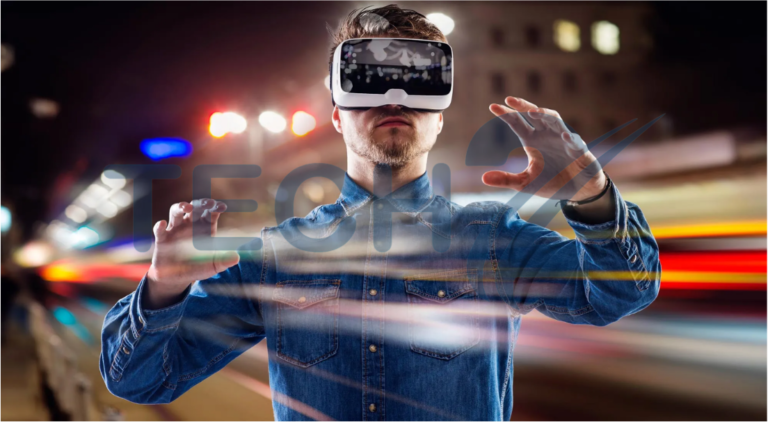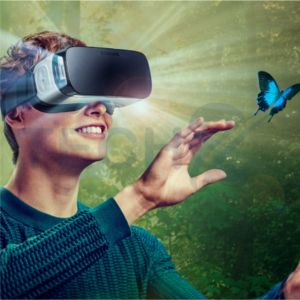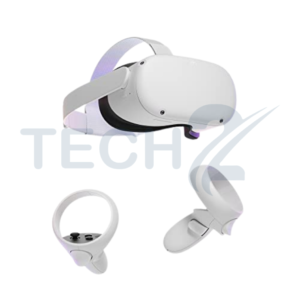
A virtual reality (VR) headset is a display that immerses users in simulated environments, offering a firsthand perspective. By replacing the real world with virtual content like games, movies, or 360-degree experiences, users can explore and interact as if they were physically present. While VR has a history, older setups were expensive and unwieldy. However, the emergence of mobile VR headsets, like goggles with phone holders, has made VR apps more accessible. The ultimate goal of VR headsets is to create an experience so engrossing that the technology itself fades away. These headsets rely on technologies like gaze tracking, IR sensors, gyroscopes, and accelerometers to mimic natural movements. Mobile apps often provide stereo sound, while tethered setups can even offer 3D or surround sound. Overcoming challenges like latency is crucial to prevent discomfort and motion sickness for users.
A like blog – Deep Q-Learning
Types of VR headsets:
Oculus Rift –
The Oculus Rift, a computer-based system, sparked renewed enthusiasm for virtual reality through a successful Kickstarter campaign by the startup Oculus VR. The Rift utilizes advanced positioning technology, allowing users to physically navigate within 3D environments, complemented by its Touch controllers.
Microsoft’s Hololens –
An independent VR headset, this system includes features such as 3D spatial sound, Wi-Fi connectivity, a camera resembling Kinect with a 120-degree spatial sensing ability, a collection of gyroscopes and accelerometers, and a see-through screen for each eye.
HTC Vive –
It connects to a high-performance gaming PC for its computing capabilities. With twin base stations, users can navigate within a 15′ x 15′ space. This system was jointly developed with Portal, a company specializing in video game software.
PlayStation VR –
Operates with PlayStation 4 instead of a computer. The system mirrors the VR headset’s display on a television screen.
Samsung Gear VR –
Google Cardboard –
An affordable smartphone holder constructed from simple cardboard material. Several budget-friendly headsets are designed following the initial open-source blueprint.

Basic Components of VR Headsets:
An array of sensors:
In contrast to 2D video, virtual reality is an active engagement where users actively engage with virtual environments, which respond based on the user’s ongoing inputs.
To enable this, VR headsets incorporate various sensors, and certain devices even incorporate a six degrees of freedom (6DoF) mechanism for tracking head movements.
Some headsets also feature sensors for tracking eye movement, capable of detecting when the user’s gaze focuses on a specific VR object or location.
A like blog – FullStack Deep Learning
Lenses and screens:
The core components of a VR headset are its lenses and screen configuration. Positioned between the screen and your eyes, stereoscopic lenses transform images into a 3D appearance. Each lens projects a separate image for each eye, mimicking how our natural vision processes the real world. Furthermore, the VR display creates the illusion of a 360-degree environment by gently adjusting the content’s position based on head tracking data, allowing visuals to simulate movement just like in reality.
Immersive audio:
In the realm of audio, a stereo feed is usually directed from two sources, one for each ear. However, our real-life auditory encounters are more intricate, intricately tied to how we perceive distance and surroundings.
In the realm of audio, a stereo feed is usually directed from two sources, one for each ear. However, our real-life auditory encounters are more intricate, intricately tied to how we perceive distance and surroundings.
Controllers:
VR headset controllers serve as the conduit between reality and the virtual realm. Intriguingly, a range of controllers is available, going beyond the common pair of handheld controllers that accompany most headsets.
Like Samsung, HTC VIVE offers single hand joystick-style controllers that dock onto a base station.
Notably, Meta is said to be working on haptic-based controllers, potentially offering touch and navigation sensitivity. Valve Index presents a distinctive approach with its controllers, featuring a design that mimics a clenched fist.

Most popular VR Headsets for 2023
Meta Quest 2:
Meta Quest 2 is best & most bought for Standalone VR. Its price starts from $299
Sony PlayStation VR2:
Sony PlayStation VR2 is best & most bought for PlayStation 5 Game Lovers. Its price starts from $599
Valve Index VR Kit:
Valve Index VR Kit has best controllers. Its price starts from $1,478
HTC Vive Pro 2:
HTC Vive Pro 2 is best & most bought for Highest-Resolution VR. Its price starts from $799
Meta Quest Pro:
Meta Quest Pro is best for Pros and High-End Enthusiasts.Its price starts from $998
HP Reverb G2:
HP Reverb G2 is best in Tethered VR category. Its price starts from $599.
